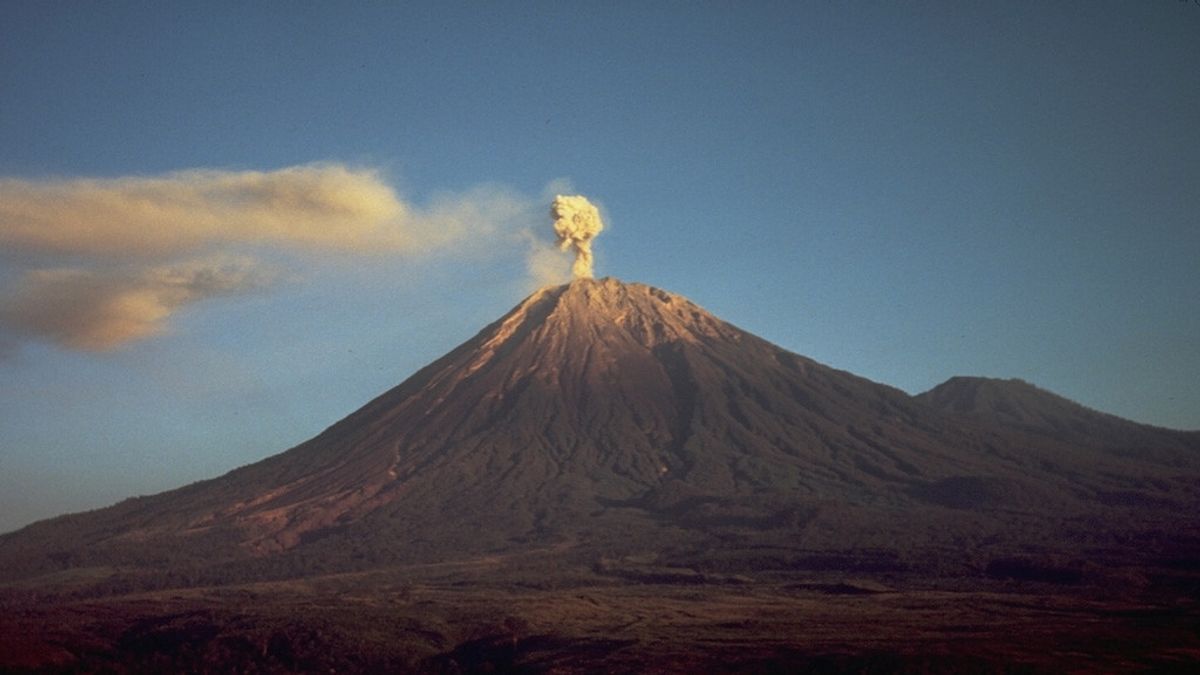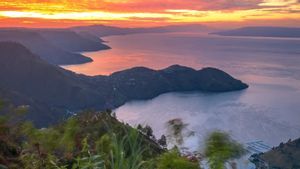JAKARTA - Mount Semeru (3,676 m) has a high appeal to explore. The beauty is second to none. Rainbows from abroad were attracted. In fact, since the Dutch colonial period. Everything changed when Semeru erupted. Its beauty faded. The eruption of Semeru in 1909 became the estuary.
Hundreds of people died. While dozens of villages were destroyed. It was this disaster that then united all ethnic groups bumiputra' to the Netherlands-- in the archipelago to garner support for victims of the Semeru eruption.
The culture and nature of the archipelago has been famous since the Dutch colonial period. Travelers from abroad also arrived. They came in the hope of enjoying all the natural and cultural offerings of the archipelago. That was what then inspired the Dutch geologist, GF Clingnett, to climb Mount Semeru.
He considers Semeru like a science paradise. After all, in Hindu cosmology, Semeru is the center of the universe. He chose to climb Semeru from the southwest, Widodaren. He also confirmed himself as the first person to successfully stand on the top of Mount Semeru, Mahameru in 1838.
The success of GF Clingnett in fact invites other travelers. One by one world travelers come to Semeru. Even though not all of them come with a goal to get to the top of Mahameru. Some of the many travelers also spend only time at the foot area of Mount Semeru and enjoy the beautiful view of Ranu Kumbolo.
The momentum of the fame of Mount Semeru was also triggered by the presence of a pocket book published by the tourism bureau in Batavia, the Official Tourist Bureau Waltevreden (the future Dutch East Indies Tourism Agency, Vereeniging Toeristenverkeer) in 1900. Java, The Wonderland, was named. The book contains puja-puja of all leading tourism destinations on the island of Java, including Mount Semeru.
On the way through the streets of Moengal (Mungal), an extraordinary sight can be seen from the south. There we see a mountain peak, Semeru, standing gracefully, and under the splendor of the morning sun.
Semeru looks clear as if we paint the imagination with live colors. painting the blue sky area, accompanied by a stretch of forest covered with green spruce. written in the Dutch East Indies tourism promotion book, Java, the Wonderland (1900).
The extension of Mount Semeru as the main tourism destination for the Dutch East Indies was disrupted. The highest mountain eruption on the island of Java changed everything on August 29-30, 1909. A natural disaster that brought disaster to the whole of Java in particular, for villages around the foot of the mountain.
People who have lost their lives due to the impact of the eruption are not small. Hundreds of people were recorded as dead, some say the lives lost are in the range of 208 people, some say 500 people. While villages that were seriously damaged by the eruption reached 38 villages.
Maha dashut the Semeru eruption displaced tens of thousands of residents. Most of those who fled had lost everything. From family, property, and also source of livelihood. People also remember the eruption of Mount Semeru as De Ramp te Lumadjang: The Lumajang disaster.
The whole of the Dutch East Indies is grieving. The presence of this natural disaster brought a deep sorrow. Moreover, those affected were not small. It was this momentum that moved all the people of the Dutch East Indies. They forget for a moment the hostility, especially the natives and the Dutch.
The Bumiputras, China, Arabia, the Netherlands, and other ethnic groups are united in raising aid for the victims of the Lumajang Disaster. They unite because of humanity and set up a temporary commission to distribute aid. The goal is that aid can be collected and distributed.
While the Malay newspapers are also empowered to get the money and especially the commercial newspaper which has obtained enough derma from its readers, there are approximately 1,000 guilders. Some readers can also know that the Chinese Betawi nation has stated from its real philanthropist on the efforts ofEerste Toneel VereenigingOpera China in Betawi which has already given a performance in Schouwburg (art building) Thalia in Mangga Besar and her income of approximately 2000 guilders has been handed over to the obligatory ones.
"Look at the efforts of this Chinese nation, the nation can also in general life once with our nation there is an address that is encouraging, because with the Anak Negeri nation already doing business. Even Budi Utomo is not left behind, in Surabaya the administrators have gone to collect funds for that danger, this is an act that must be praised and taken as an example," said Tirto Adhi Soerjo in the Medan Prijaji newspaper (1909) as compiled by Iswara N. Raditya and Muhidin M. Dahlan in the book Karya-Karya Complete Tirto Adhi Soerjo: Press, Movement, and Nationality (2018).
The English, Chinese, Japanese, Arabic, and French versions are automatically generated by the AI. So there may still be inaccuracies in translating, please always see Indonesian as our main language. (system supported by DigitalSiber.id)










